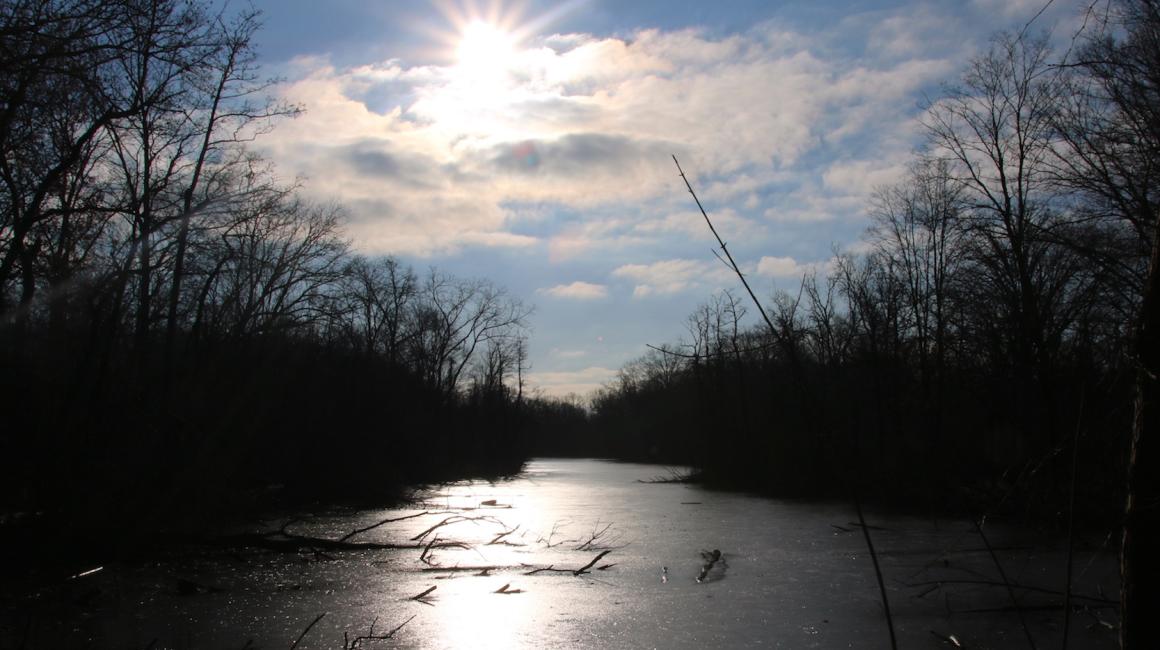
This article was originally published on January 28, 2019.
Even though the trails outside of the Environmental Interpretive Center may not be evergreen, the interesting sights you can see while walking are.
Natural Areas Manager Rick Simek said each season provides reasons to step away, when you can, from classrooms and office spaces and head outdoors to the campus’ Environmental Study Area (ESA). And winter is no exception.
With the leaves mostly fallen, except for the few still clinging to oak tree branches, Simek said you can see birds a bit more easily. The snow gives clues to what animals — beaver, deer or turkey — have recently crossed your path. And fresh brisk air is known to boost the immune system.
All bundled up,we recently went out to explore the ESA’s trails. Here are five favorite sightings.
Turkeys
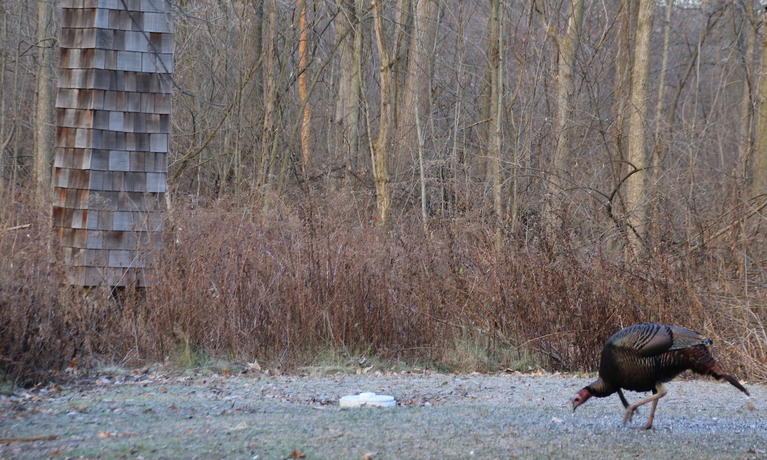
Simek said turkeys hadn’t been seen in this area since 1900 — that is until three or four years ago. “You can imagine my surprise when I first saw eight or nine turkey poults here,” Simek said. “It was the very first sighting of turkeys; a volunteer and I saw them before they scattered. They surprised us and we surprised them.”
Now you can regularly see turkeys around the natural areas, with 9 - 10 a.m. as an especially good time. Every morning Simek brings seeds out to the birds; regularly joining them is a tom. “He’s out almost every day. Well, except for around Thanksgiving. Believe it or not, he disappeared for a few days like he knew.”
With the turkeys venturing so close to the EIC, Simek said there’s a sightseeing option for those who want to remain indoors. The EIC quiet room, which faces the bird feeders, is a good place to watch the turkeys.
“It’s nice to see them serendipitously on the trails or to follow their tracks in the snow. But the turkeys will stand outside the center’s windows. Last spring we regularly saw a wild turkey courtship from those windows; it was like something on National Geographic.”
A large white oak
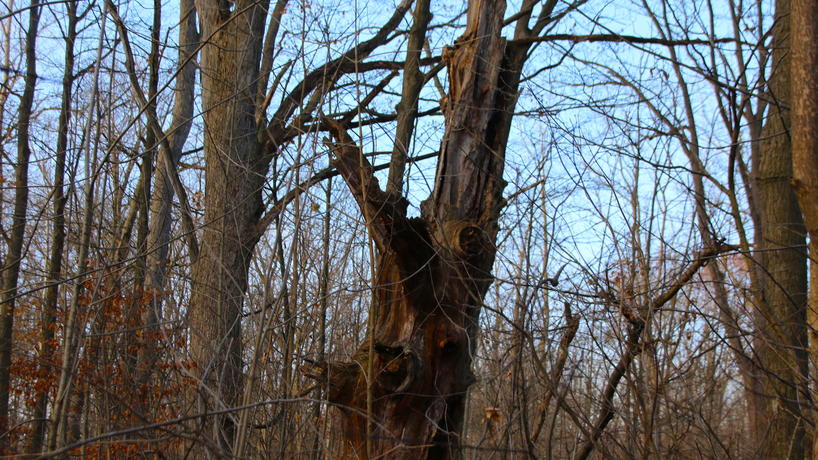
When walking the trails, you may notice the signs indicating trail names. The one called White Oak Trail — along the western shore of the lake — has a prominent large snag. Its branches are long gone and the robust trunk still stands tall, but it’s beginning to lean due to the natural elements taking their toll.
Simek said the white oak tree was estimated to be 300 years old or older by the time it died around the year 2000.
The age estimation of the tree was made in the late 1970s by tree expert Paul Thompson — then the statewide big tree coordinator for the Michigan Botanical Club, a role he had for 40-plus years — who worked with Biology and Environmental Studies Professor Orin Gelderloos and one of his classes.
“That tree was here long before us, long before Henry Ford,” Simek said. “That tree stood when wolves and bears roamed around here. And, although that tree may not be living anymore, a portion of it still stands today. It gives a sense of time and place and history.” Simek also said there’s a century-old record of Henry Ford noting a Great Blue Heron stick nest in a large white oak on his property, and some think this is the tree Ford was referencing.
Turkey tail mushrooms
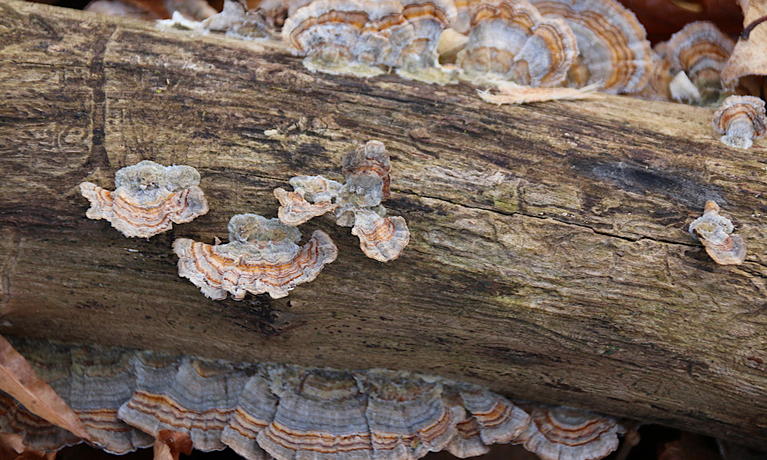
The closer you look, the more you see. Simek calls it nature snooping.
“Take the time to stop and look at the things that may be close at hand, but don’t jump out,” he said. “Beautiful, wonderful things are right in front of us, but we are so focused on ourselves that we often don’t see them. So be deliberate, if you have the time, and look around while on your walk.”
Taking his advice, we noticed a log with brightly colored ruffles on the beaten path not too far from the EIC. According to Simek, it has been there for months.
“Ah, that is turkey tail mushroom,” Simek said. “It tends to grow on logs or branches on the ground. By taking the time to look down, you can watch where you are stepping and see a bit more of nature’s artistry.”
An array of colorful birds
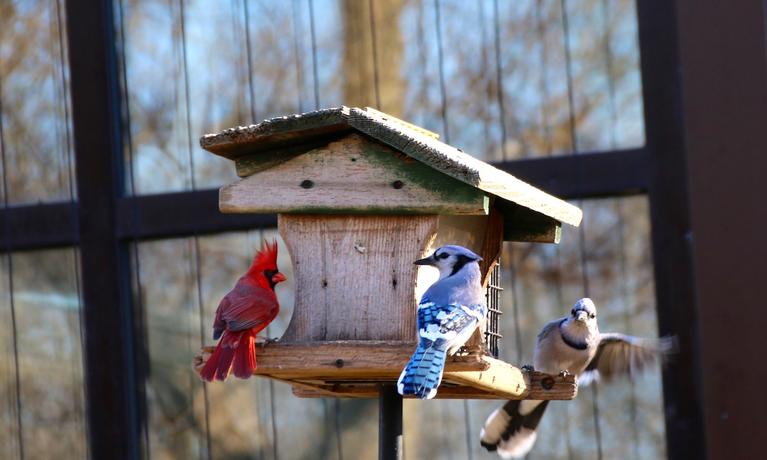
With the leaves gone, sounds are less muffled. You also get a clearer view of what’s in the trees. Winter is a great time to bird watch.
Visitors can see a variety of birds while on the trails: nuthatches, woodpeckers (red-bellied, downy, hairy), blue jays, cardinals, tufted titmouses, black-capped chickadees and more. Simek suggests: Before heading out to the trails, listen to different bird sounds on allaboutbirds.org to help identify the different calls.
It’s a common belief that birds migrate because they become too cold in the winter, Simek said. But that’s not the reason. Birds, even the smallest ones, keep warm by eating, moving and fluffing their feathers; they migrate when there is a lack of food.
And winter food sources— especially for the seedeaters and those that can find dormant insects and spider and insect eggs — are plentiful in the EIC natural areas. So they stay.
Raccoons peeking out to say hello
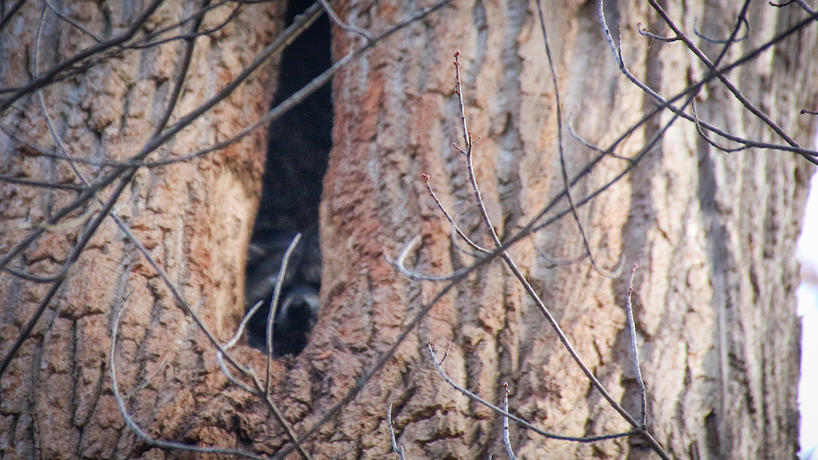
Birds aren’t the only ones who make homes in the trees. A family of raccoons has comfortably established residence in an old cottonwood tree along the east side of the Lakeside Trail.
During Simek’s nearly 25 years at the EIC, he’s noticed different generations peering out of the tree cavity. Typically, raccoons are nocturnal. But with the crunch of snow steps, they peek out. And without the cover of leaves, you can see them. “Raccoons are curious animals. They are going to look to see what’s going on around them.”
Simek said the tree is a regular stop on the tours he gives. But not just for the raccoons. It’s to remind people about the importance of trees and the various life-giving properties, like providing shelter, they have. “Trees also provide benefits — like enriching the soil — well past their living years.”
It’s these interesting occurrences that make walking the trails so enjoyable — in the winter and throughout the year. Because nature is always in season.





